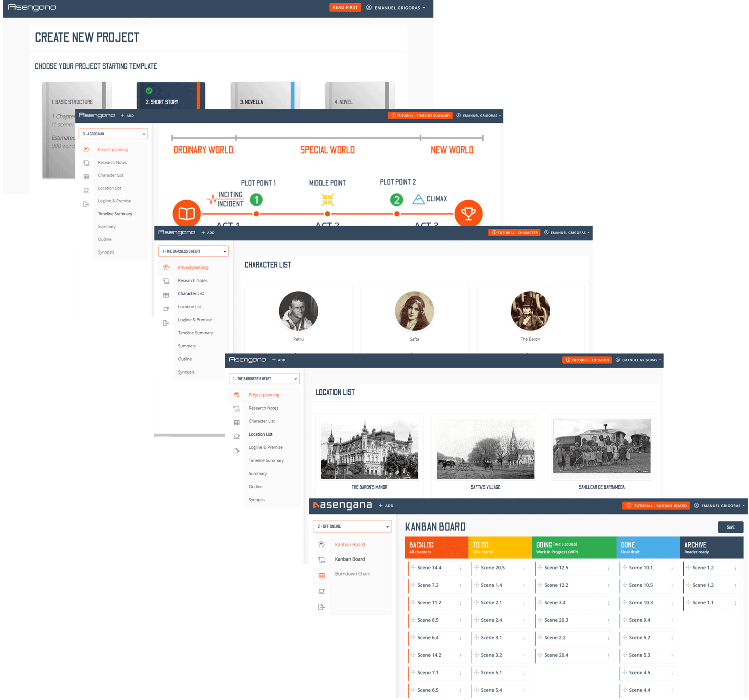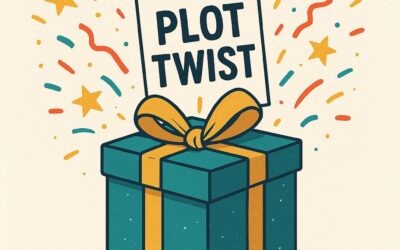People rarely talk about the predictable. Instead, they share stories that spark delight, amazement, or shock. In a saturated market, a writer’s best bet for word-of-mouth promotion is to cultivate genuine surprise in every aspect—from plot twists in your novels to...

*14 days trial. Full access. Starting from $6.75/month afterwards.
Learning Resources
Social Media Marketing
Product Release Updates
About Writing and Writers
Latest Blog Posts
Harnessing Rejection For Stronger Drafts
Rejection stings, and writers face it constantly—from harsh critique partners to unenthusiastic literary agents. But a carefully examined “no” can become the raw material for growth. Learn to sift through negative feedback and find the constructive seeds that...
Bold Experiments Expand Your Writing Horizons
Writers often box themselves into a single genre or style, fearing the unknown. Yet small, bold experiments—short detours into unfamiliar territory—can spark enormous growth. Whether it’s testing a new narrative device or diving into an untried theme, these...
Keeping Fans Engaged With Ongoing Facts And Insights
For authors aiming to keep their audience invested between releases, newsletters can be a strategic lifeline. Instead of repeating the same book promotions, try delivering fresh content shaped by the “scraps from last night’s dinner” concept: new data or lesser-known...
Building Reader Curiosity With Extended Universe Snippets
Ever felt reluctant to cut a beloved scene from your manuscript during edits? Instead of discarding it forever, consider transforming those “lost moments” into bonus blog content or downloadable extras. By tying these snippets to your story—much like “The scraps from...
Using Leftover Facts For Visual Engagement And Higher Sharing Potential
While blog posts and “missing scenes” are excellent ways to repurpose leftover research, infographics can deliver data-driven insights in a more shareable, eye-catching format. Most authors overlook the wealth of numbers, stats, and comparisons uncovered while...
Turning Unused Book Research Into Engaging Blog Content
Review one of your research folders where you stored fascinating, unused facts. Select a single compelling detail and outline a short blog post. Highlight its relevance to your book’s era or theme, then invite readers to share their thoughts. Watch how turning these scraps into valuable content enhances both your SEO presence and reader engagement.
Turning Niche Research Into Targeted Readers
Long tail keywords are specialized search terms people use when seeking precise info (e.g., “gothic architecture in 12th-century France” or “zero gravity plant growth experiments”). These highly focused queries may generate fewer searches, but the conversion rate—people actually reading and staying on your page—tends to be higher.
Streamlining Drafts While Preserving Spontaneity
Revision is where novels truly emerge, but it can also overwhelm. Many writers dread the necessary cuts, reordering of scenes, and rewriting of central conflicts. Yet a disciplined revision blueprint, adapted from tried-and-true structural methodologies, helps...
Mapping Interactions For Authentic Tension And Character Growth
Sketch a character grid for your current manuscript. Identify each supporting figure’s impact on the hero’s flaws, motivation, and theme. Spot any weak links or missing links. Strengthen those arcs, adding or removing characters as needed. Then watch as your story’s emotional tapestry becomes richer and more compelling, bound by purposeful relationships that keep readers hooked.
Aligning Every Plot Beat With Meaning And Purpose
Writing something that entertains is valuable, but writing something that resonates on a thematic level can be transformative. Thematic depth doesn’t mean preaching to readers or weighing down scenes with heavy-handed symbolism. Instead, consider each chapter a...
Deepening Inner Conflict And Character Complexity
In novels that linger in a reader’s mind, it’s not the action alone but the emotional core that resonates. Complex sequences or imaginative worlds matter, but they can’t replace vivid feelings. Advanced writing craft goes beyond surface conflicts (like a looming war...
You should be writing
If you’re going to invest money into a writing software, you deserve a smart and easy-to-use solution.
It takes more than a proficient writing process to turn a blank page into a novel.
It’s a journey from a writer distracted by the use of multiple tools – for writing, time and project management – to being an author capable to plan efficiently and write multiple books at the same time using one platform.
Have an account? Log in















